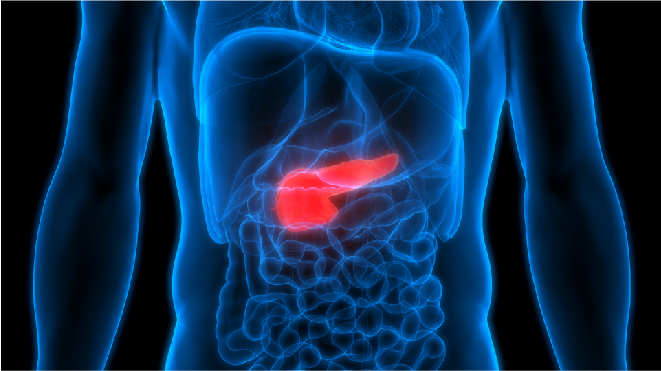Gallbladder cancer as the name suggests, begins in the gallbladder, an organ that stores a substance called bile. To read about gallbladder and gallbladder cancer, click here
Treatment outcome of gallbladder cancer:
Outcome is referred to the results that could be expected from a particular treatment. This depends on a number of factors like stage and type of cancer, type of treatment given, age, tolerance and overall health of the patients and it varies for each patient. The number of patients who have survived the cancer with the anticancer treatments determines the success rate of the treatment and it is often represented by the five year survival rate. This is the number of patients who survived the cancer for more than five years, out of every 100 people diagnosed with it. The following are the outcomes of the treatment methods for gallbladder cancer:
Chemotherapy:
This treatment is used in treating metastasized or advanced stages gallbladder cancer which cannot be removed by surgery alone. Chemotherapy uses drugs which are given orally or intravenously to kill the cancer cells. These drugs are often given in combination with other drugs or treatments. Chemotherapy alone does not show good results in treating in gallbladder cancer. This treatment is often given in cycles. Each cycle of dosage is followed by a rest period which helps the patient to cope up with the side effects.
It is often used for metastasized or recurrent cancer to remove the remaining cancer post other treatments. Chemotherapy for gallbladder cancer has good survival rates only if it is combined with other treatments. To read about the common drugs used in chemotherapy, click here.
Radiotherapy:
This treatment uses high beams of x-rays to kill the malignant cells. The radiation is aimed at the cancer cells to kill them and restrict their growth. Radiation therapy is also used to shrink tumours. The success rate of radiation is comparatively good in treating gallbladder cancer. Higher and precise dosage of radiation will increase the effectiveness of the treatment, but the dose should be slowly increased under steady monitoring due to potential side effects. Read more about radiotherapy for gallbladder cancer treatment here.
Surgery:
In the treatment of gallbladder cancer, surgical procedures aim at removing the tumours or the entire gallbladder. Surgeries have high success rate in removing the tumours or the affected areas, but they have low survival rate in treating the cancer. Hence, surgeries alone cannot treat metastasized gallbladder cancers. However, if the cancer has not spread much, surgery has a high survival rate in gallbladder cancer.
For metastasized or advanced stages of gallbladder cancer, surgeries are followed by chemotherapy or radiation therapy in order to remove the remaining cancer and treat recurrent gallbladder cancer. Read more about surgery for gallbladder cancer here
Survival rate of gallbladder cancer by stage:
The survival rate usually refers to the five year survival rate that shows how many patients out of 100 live beyond five years after first being diagnosed by a specific cancer. It is an indicator to understand the outlook of the patient based on the type and stage of cancer.
Gallbladder cancer has a survival rate of almost 20%. Only 1 out of every 5 patients who have gallbladder are diagnosed early because this cancer often doesn’t show up in general screening tests and also, it does not show any symptoms until advanced stages. The 5 year survival rates of different stages of gallbladder cancer are:
Stage I:
In this stage, the cancer is still confined to the gallbladder only. Hence, on diagnosing the cancer, the survival rate of stage I gallbladder cancer is 50% to 80%. Read about the treatment of stage I gallbladder cancer here
Stage II:
If the cancer has spread to the nearby lymph nodes of the gallbladder, combination of treatments along with extensive surgery are recommended to eliminate cancer. The survival rate of gallbladder cancer of this stage is approximately 24%. Read about the treatment of stage II gallbladder cancer here
Stage III:
Metastasized cancer comes under stage III gallbladder cancer and cannot be removed by treatments. The survival rate of cancer at this stage is below 10%. Read about stage III of gallbladder cancer and its treatment here
Stage IV:
Stage IV of cancer is when the cancer has spread to other organs like liver, lungs through the main blood vessels and lymph nodes. No treatment can completely eliminate this stage of cancer but only relieve the patients from the pain and the symptoms caused by the disease. The survival rate of stage IV gallbladder cancer is around 5%. Read about stage IV of gallbladder cancer and its treatment methods here
Follow up for gallbladder cancer:
The patient have to monitor his/her health regularly, even after active treatment for gallbladder cancer. They have to be monitored for any signs or symptoms of recurrent cancer, manage with the side effects of the treatments alone with the general health of the patient. The following is the follow up care for gallbladder cancer:
Developing a follow-up care plan:
The patients are advised to develop a diet plan, planning of future appointments with the doctor along with the lost of medical and physical examinations as a part of the follow up care plan. This not only helps the patients to strike back at their regular life, but also minimizes the risk of side effects and recurrent cancer.
Regular monitoring of blood cell count:
Blood transfusions may be required in case of lowered number of blood cells which is why it is advised to regularly monitor the patient’s blood count. For patients who experience lowered blood cell count, blood transfusions may be required.
Regular monitoring of hormonal levels:
The drugs used in treating gallbladder cancer can lead to hormonal changes in very few patients and in such cases external infusions may be required.
Healthy diet as advised by a nutritionist:
The patients have to be very careful with what they eat by estimating their digestive tract acceptance. Treating the gallbladder cancer will have a very large impact on the digestive system of the body. Hence after estimating the digestive tract acceptance, the patients have to follow the diet that the nutritionist recommends.Watching for recurrence of cancer:
Strict monitoring is required to check for any symptoms of recurrent gallbladder cancer. In case the symptoms begin, next cycle of the treatment has to be started.
Managing long term side effects:
In order to cope up with the long term side effects, the patients will have to be constantly monitored by the following tests: the patients must have a detailed plan in order to reduce the risk of life due to the long-term side effects. Following are the tests, through whose results the doctors give therapy to reduce the side effects:
- Heart check-ups
- Lung function
- Regular electrocardiograms (EKGs)
- Mammography
- Computed tomography (CT) scans
Keeping personal health records:
For the further diagnosis or treatment in the future, the patients are advised to maintain a detailed record of the medical history, which includes the previous treatments that the patient has been given for the gallbladder cancer treatment and in the past, along with his/her allergic descriptions.
Care to be taken for gallbladder cancer:
The follow up plan also includes a proper after care for the patient to follow:
- Regular check-ups with the doctor
- Have small healthy meals six to eight times a day
- Stay hydrated
- Not work too hard
- Keep skin moisturized
- Take nourishment supplements
- Take anti sickness medication to prevent reduce weakness
- Consult a doctor on any reactions
- Avoid spicy food
- Do not overload the liver
- Self hygiene is very important especially when the patient is given biliary bypass




